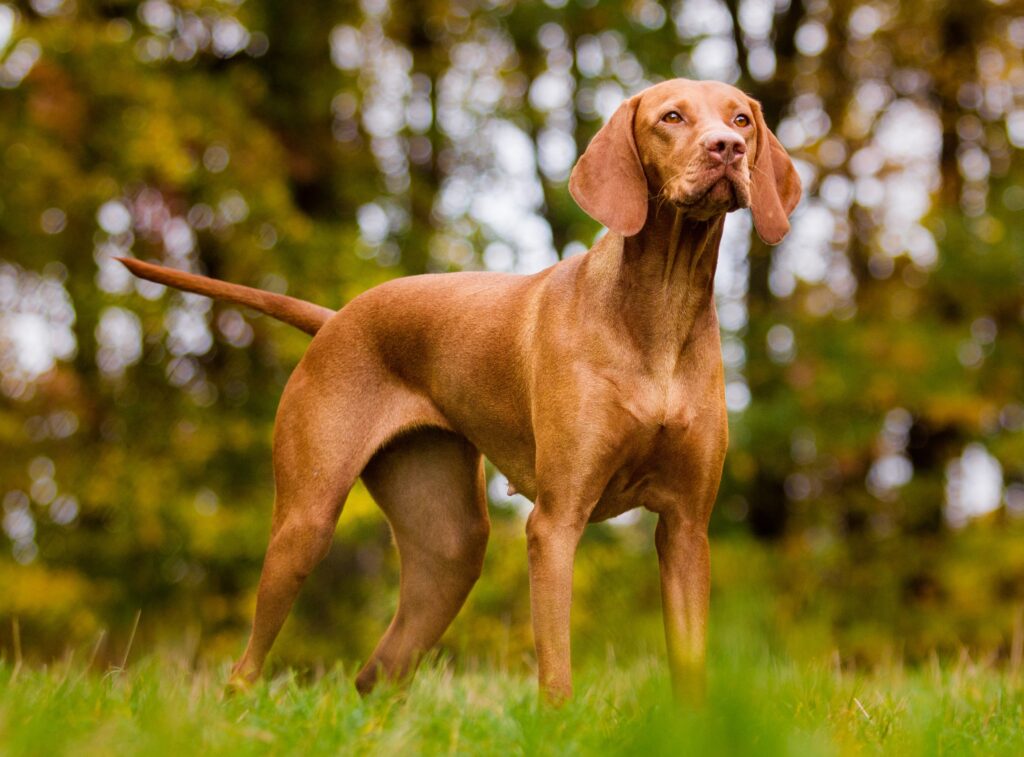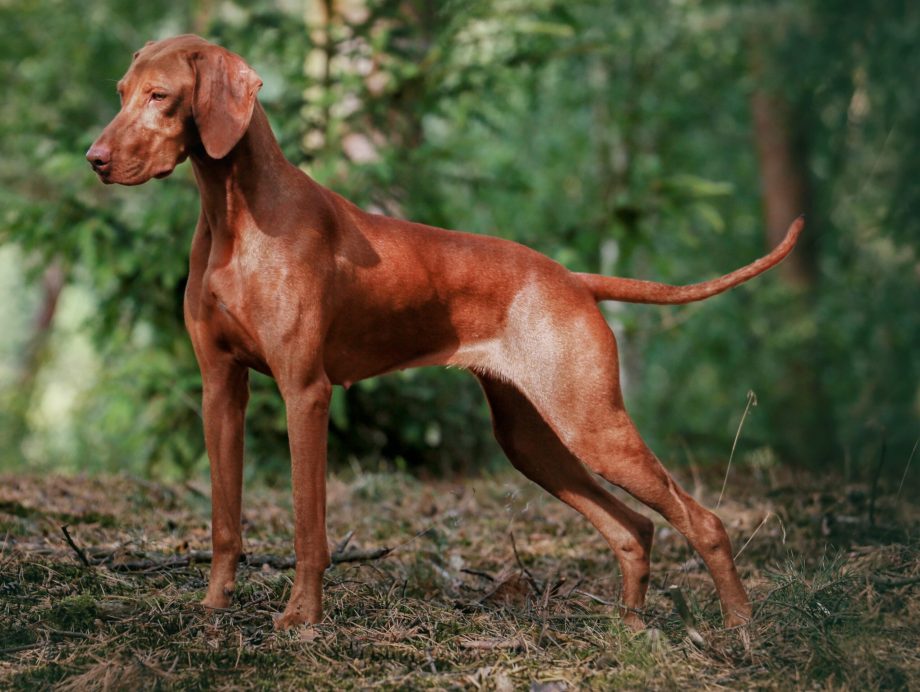The Hungarian Vizsla is the national dog of Hungary. It is an athletic, red-coated gundog, bred as a bird hunter, which has also become a popular companion pet.
Of medium height, they are lean and muscular, with a sleek body and long legs. They have long silky ears and a reddish nose that blends with their russet gold coat, which is short and smooth and without an undercoat. Vizslas are very active and intelligent dogs that require plenty of physical and mental stimulation. They are also very people-orientated and form close bonds with their owners, preferring not to be left alone for too long, so much so that they are sometimes referred to as velcro dogs. They are gentle-natured and very affectionate, making them great companions for children, although beware as a young Vizsla may be too boisterous and energetic for very small children. They also get on well with other dogs and even with cats, if raised alongside them. Caution should be taken with other small household pets due to their high prey drive. Vizslas need a minimum of two hours of exercise a day and will relish long walks, runs and endless games of fetch. With their active brains, they will also enjoy gentle training and fun puzzle games. With their athleticism and stamina, they are perfectly suited as a running companion, which will also help to use up some of that energy. For active owners and families, that are able to spend lots of time exercising and simply being with their dog, the Vizsla will make a devoted and loving companion.

History
The Hungarian Vizslas history dates back as far as the 9th Century when Vizsla-type dogs travelled with the Magyar tribes from the Steppes of Asia on their invasion into Western Europe, eventually settling in Hungary. Over the following centuries, Hungarian nobility refined these swift red-coated dogs and used them as hunting dogs across the Hungarian plains. The Vizsla was used to develop other breeds in causing the Weimaraner, Hungarian Wirehaired Vizla and German Pointer breeds.





